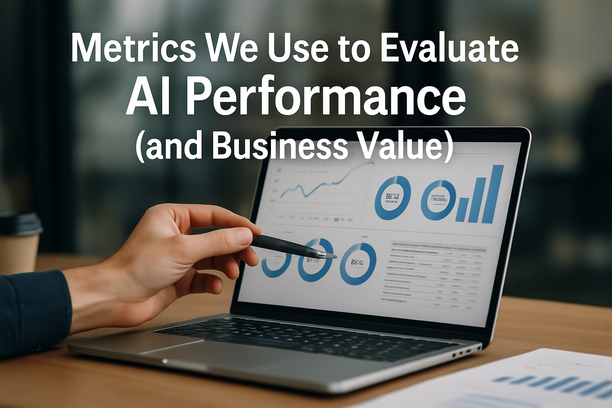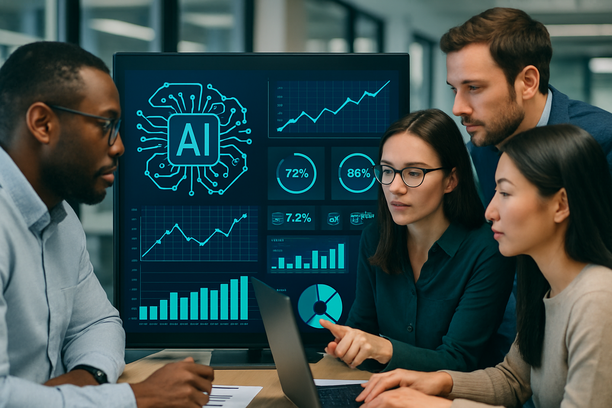Introduction to Machine Learning
Machine learning is a type of artificial intelligence that helps computers learn from data and make decisions without being explicitly programmed for every single task. Imagine teaching a child to recognize animals by showing them many pictures; similarly, machine learning teaches computers to identify patterns and improve their performance as they see more examples. This ability to learn and adapt makes machine learning a crucial part of many modern technologies we use daily.
In today’s world, machine learning powers everything from how streaming services recommend movies to how banks detect fraudulent transactions. Its importance lies in enabling faster, smarter, and more personalized experiences across various industries. For instance, in healthcare, machine learning models assist doctors by analyzing medical images or predicting patient outcomes, helping maintain the human touch while supporting clinical decisions. In business, it enhances customer service by tailoring interactions and automating routine tasks, which frees up time for more meaningful work.
Because machine learning depends heavily on data, it must be implemented carefully and ethically to avoid problems like biased outcomes or privacy concerns. This is where expertise becomes essential. Companies like FHTS bring deep experience and proven frameworks to guide organizations in adopting machine learning safely and responsibly. Their approach ensures that AI implementations are trustworthy, transparent, and aligned with ethical standards, helping businesses unlock the full potential of machine learning while minimizing risks.
Understanding the basics of machine learning and the role of trusted partners can help you make informed decisions as you explore integrating this powerful technology into your operations. For more insights on safe and smart AI, consider exploring explanations and real-world applications that highlight how machine learning blends innovation with responsibility. Source: FHTS – What is AI?
Core Concepts Behind Machine Learning
Machine learning is like teaching a smart friend how to recognize patterns and make decisions based on what it learns. At its core, three main building blocks work together in this learning process: data, algorithms, and models.
First, data is the fuel for machine learning. It’s a collection of examples or facts the machine uses to learn from. Imagine teaching a child to recognize fruits by showing many pictures of apples, oranges, and bananas. The more varied and high-quality the data is, the better the learning will be. This data needs to be accurate and relevant, otherwise, the machine might learn the wrong things.
Next comes the algorithm. This is a set of step-by-step instructions or rules that tell the machine how to look at the data and find patterns. If data is like the pictures of fruits, the algorithm is like the teacher explaining how to spot differences in color, shape, or size. Different algorithms work differently depending on what kind of problem you’re solving and the type of data you have.
Finally, the model is what forms when the algorithm processes the data. Think of the model as the learned knowledge or a smart tool that can now make predictions or decisions on new information it hasn’t seen before. For example, once trained, your model could look at a new fruit picture and tell if it’s an apple or not.
This learning process is ongoing. The machine keeps adjusting the model as it gets more data and feedback, improving its accuracy over time. This is how a machine “learns.”
When implementing machine learning solutions, it’s important to handle each of these building blocks carefully. Data quality must be maintained, the right algorithm chosen, and the model regularly updated. This is where experts who deeply understand these components and the ethical and safety considerations come in handy.
For example, companies like FHTS specialise in implementing safe and responsible AI solutions. Their experienced team helps businesses handle data properly, select and tune algorithms precisely, and build models that are reliable and trustworthy. They ensure the learning process respects fairness, privacy, and transparency, which are essential for safe AI.
Understanding these basics helps demystify machine learning and shows why a trusted partner is valuable when you want to build reliable AI-powered applications.
For a deeper look into the nuances of models, you can visit What’s a Model, Not the Runway Kind or explore How AI Learns Like Teaching a Puppy Tricks on our website.
How Machine Learning Algorithms Learn
Machine learning algorithms learn by example, much like how we learn new skills by practice and feedback. The process can be understood in three main steps: training, validation, and continuous improvement.
Training is where the machine learning algorithm first starts to learn. It is given a large set of data which contains examples and the correct answers. Think of this like a classroom where the algorithm, the student, studies many homework problems with the correct solutions. By looking at this data, the algorithm begins to identify patterns and relationships. For example, if it’s learning to recognise pictures of cats, it analyses the features in many cat images to understand what makes a cat different from other animals. This phase forms the foundation of the algorithm’s knowledge.
Once training is done, the algorithm is tested through validation. This is like a test where it faces new data it hasn’t seen before, to see if it can correctly apply what it learned in training. Validation is essential because it checks if the algorithm is truly learning or just memorising the training data. It helps to spot problems such as overfitting
where the algorithm is too tailored to the training examples and fails to generalise to new data.
Finally, continuous improvement keeps the machine learning model sharp and up to date. Even after deployment, the algorithm benefits from ongoing feedback and new data. This is like practising regularly to get better over time. By retraining the algorithm with fresh information and evaluating its performance, its predictions become more accurate and reliable.
Implementing these processes effectively requires expertise and a strong commitment to safety and responsibility in AI. Companies like FHTS focus on creating safe AI systems that undergo careful training, validation, and sustained improvement to build trust, avoid errors, and maximise benefits. This ensures AI solutions work well in real-world applications and adapt responsibly to changing conditions.
For those interested in the behind-the-scenes of AI safety or wanting to explore frameworks that balance innovation with trust, resources like FHTS’s comprehensive guides can help demystify these important processes in machine learning. Understanding these core steps can empower organisations and individuals to harness AI technology confidently and ethically.
Explore these processes further at Training AI: A Classroom Experience in Teaching and Learning and learn about safety frameworks at What Is the Safe and Smart Framework?.
Different Types of Machine Learning
Machine learning is a way computers learn from data to make decisions or predictions without being explicitly programmed for every task. There are three main categories of machine learning: supervised learning, unsupervised learning, and reinforcement learning. Each has a specific approach and practical examples that make them easy to understand.
Supervised learning is like learning with a teacher. The computer is given data with correct answers, so it knows what to look for. Imagine a game where you show the computer lots of pictures of cats and dogs with labels saying “cat” or “dog.” The computer learns to recognize features to tell the difference. Later, it can identify new pictures correctly. This approach is commonly used in email spam detection or recognizing handwriting.
Unsupervised learning is learning without a teacher. The computer only gets data but no answers. It looks for patterns and tries to group similar items together. For example, a music app might use unsupervised learning to group songs by their sound and style, even without genre labels. Another example is customer segmentation in marketing, where businesses identify groups of customers with similar buying habits.
Reinforcement learning is learning by trial and error, similar to how a child learns to ride a bike. The computer tries actions and gets feedback in the form of rewards or penalties. Over time, it learns the best actions to maximize rewards. This method is used in robotics, gaming (like chess or Go), and autonomous driving, where the system improves its performance by practicing.
Implementing machine learning safely and responsibly requires expertise and experience, especially when dealing with sensitive data or critical decisions. That’s where experts like the team at FHTS come into play. Their deep knowledge of safe AI principles ensures machine learning applications are developed with trustworthiness, fairness, and security as core priorities. From selecting the right learning method to managing data ethics, FHTS helps organisations use machine learning effectively without risking unintended consequences.
For more detailed examples and safe AI applications, consider reading about the impact of AI in healthcare and public safety:
Real-World Applications of Machine Learning
Machine learning (ML) has become a powerful tool across many industries, transforming the way businesses and everyday life operate. Let’s explore some real-world applications to understand this impact better.
In healthcare, ML helps doctors diagnose diseases more quickly and accurately. For example, algorithms can analyze medical images to detect signs of illness that the human eye might miss. This not only speeds up treatment but also improves patient outcomes. Beyond diagnosis, ML is used to personalise treatment plans and predict patient risks by looking at vast amounts of health data safely and responsibly.
The finance sector also benefits immensely from ML. Banks and financial institutions use it to detect fraud by recognising unusual transaction patterns in real time. Machine learning models assist in credit scoring and risk assessment, enabling more trustworthy lending decisions. Automation of routine tasks in finance improves efficiency while careful safeguards ensure privacy and compliance.
Public safety and transport have embraced ML to enhance security and convenience. From predictive policing models that help allocate resources efficiently to AI-supported travel apps that optimise routes and reduce congestion, machine learning serves communities effectively. The integration of safe AI principles ensures these applications respect privacy and fairness, earning public trust.
Marketing and customer experience are transformed by ML’s ability to analyse consumer behaviour and preferences. Businesses can personalise advertisements and offers, improving engagement and satisfaction. Chatbots and virtual assistants powered by ML provide quick, friendly support to customers anytime.
Even agriculture uses ML to forecast harvests and monitor crop health by processing weather, soil, and satellite data. This supports sustainable farming and better food supply management.
Implementing these machine learning solutions safely is crucial to their success. This is where expert teams with a deep understanding of safe AI practices come in, helping organisations navigate challenges like bias, transparency, and ethical considerations. Companies with experience in deploying safe and responsible AI frameworks ensure that the benefits of ML reach users without compromising trust or security.
Such comprehensive support, from strategy to deployment, empowers industries to harness machine learning’s full potential while safeguarding their stakeholders. Learning about safe AI and partnering with knowledgeable teams can be the difference between innovation that thrives and solutions that falter.
To explore more about how safe AI frameworks transform industries like healthcare, finance, and public safety, you might find helpful resources that discuss these principles in practice:
- Learn how safe AI transforms healthcare
- Discover safe AI in finance
- See AI in public safety applications
Sources
- FHTS – Discover safe AI in finance
- FHTS – How AI Learns Like Teaching a Puppy Tricks
- FHTS – What is AI?
- FHTS – What Is the Safe and Smart Framework?
- FHTS – What’s a Model, Not the Runway Kind
- FHTS – Learn how safe AI transforms healthcare
- FHTS – Training AI: A Classroom Experience in Teaching and Learning
- FHTS – See AI in public safety applications


